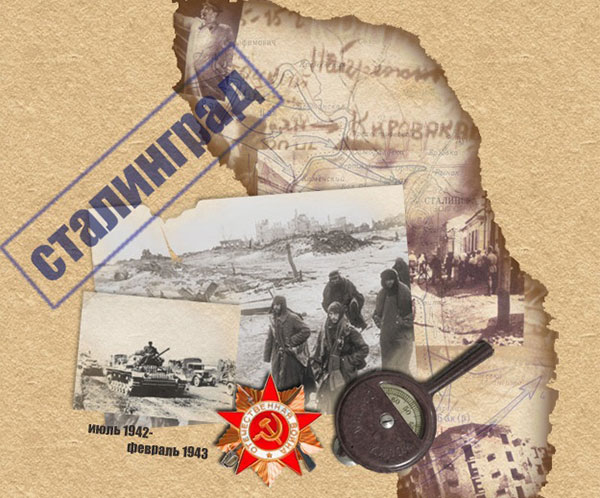|
In mid-July 1942, the enemy broke into the big bend of the Don. The Soviet troops in fierce defensive battles delayed the enemy's advance, but Stalingrad was still in danger. The city under the direction of the Stalingrad party organization was preparing for the defense. The soldiers and people were building fortifications on the outskirts of the city. Armed units were set up in the enterprises. In late August, the enemy resumed the offensive and on August 23, broke through to the Volga northward of Stalingrad. At the same time the enemy planes flew a massive raid on the town. To September 12, fighting in the outskirts of the city continued. On September 13, the enemy by entering into battle additional 9 divisions and one brigade began to assault the city. Unparalleled and intensity of fighting spread out in the streets. The battle stopped either in the afternoon, or at night. “Beyond the Volga there is no place for us” — under this motto, the defenders were fighting for each quarter, street, and house. Stalingrad workers were as courage as brave soldiers. When street fighting approached directly to the factories, they defended each factory building, each shop with arms along with the warriors. In summer and autumn of 1942, echelons of military and weapons replenishment reached the Stalingrad region. Supreme High Command General Headquarters directed there most of the reserves, planning a major counteroffensive. It was foreseen to break through the enemy lines on the flanks of the main enemy now concentrated in the area of Stalingrad, to encircle it and destroy. Despite the extremely difficult conditions, the defenders of Stalingrad held out. On November 19, 1942, after careful preparation the Soviet troops launched an offensive and by 23 November, they closed the encirclement of the enemy forces. 22 divisions were marooned — more than 330 thousand German soldiers, officers and generals. In early February 1943, the surrounded group was eliminated. The victory at Stalingrad was the largest military-political event. It made a huge contribution to the radical change in the Great Patriotic War and the Second World War. Remarkable monument — the ensemble on Mamayev Kurgan will always remind of the greatness of the immortal exploits of the heroic defenders of Stalingrad. In our country — in granite, in bronze, and metal —monuments to the soldiers, partisans and underground fighters, those who selflessly hammered into the rear of the sacred weapon of victory, are towering. In the history of mankind the victory of the Soviet troops at Stalingrad became a clear evidence of an irresistible force of the multinational Soviet state, the monolithic unity of the army and people, showing all of the humanity's greatest examples of courage and fortitude of the Soviet soldiers. It was the beginning of radical change in the course of not only the Great Patriotic War, but the entire World War II. For more information on war heroes visit Our Victory social project official website.
|

